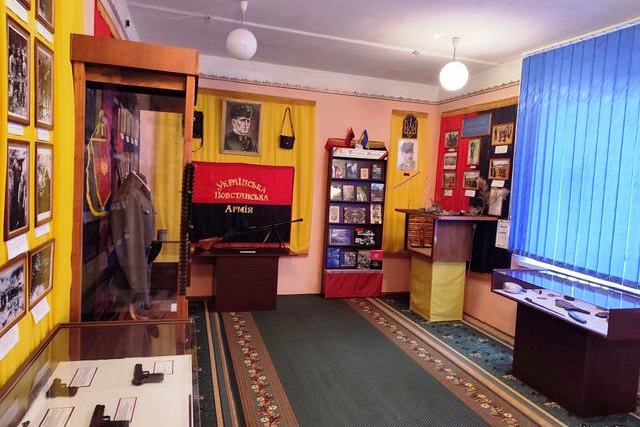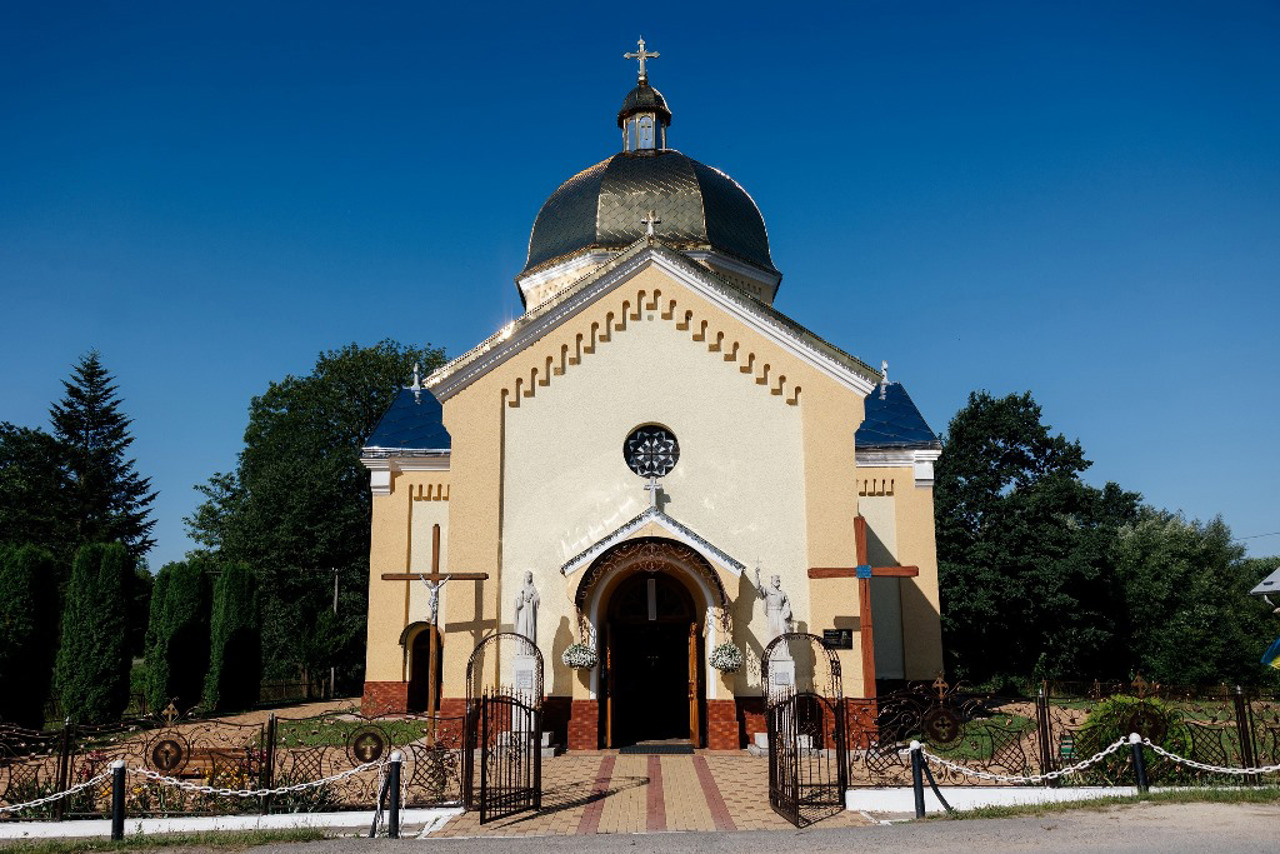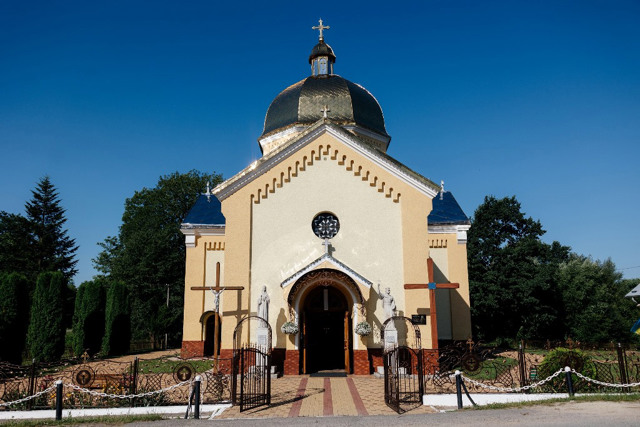Functional temporarily unavailable
General information about Kavsko
The village of Kavsko on the Kolodnytsia River is located 15 kilometers north of Stryi. It is administratively part of the Stryi city hromada of the Stryi district of the Lviv region.
The year of foundation of the village is considered to be 1334, although archeological studies show that ancient Rus settlements existed here as early as the 11th-12th centuries. Kavsko was one of the fortresses on the former Rutenian Road. In 1648, the inhabitants of Kavsko together with the peasants of other villages of Stryi region took part in the capture of Drohobych.
During the Polish rule, the village belonged to Malchynsky, Kopystensky, Hordynsky, Lyubomyrsky. With the assistance of the Lyubomyrsky princes, the brick church of Saint Paraskeva was built in 1909. In 1910, the "Enligh ...
The village of Kavsko on the Kolodnytsia River is located 15 kilometers north of Stryi. It is administratively part of the Stryi city hromada of the Stryi district of the Lviv region.
The year of foundation of the village is considered to be 1334, although archeological studies show that ancient Rus settlements existed here as early as the 11th-12th centuries. Kavsko was one of the fortresses on the former Rutenian Road. In 1648, the inhabitants of Kavsko together with the peasants of other villages of Stryi region took part in the capture of Drohobych.
During the Polish rule, the village belonged to Malchynsky, Kopystensky, Hordynsky, Lyubomyrsky. With the assistance of the Lyubomyrsky princes, the brick church of Saint Paraskeva was built in 1909. In 1910, the "Enlightenment" cell was founded in Kavsko.
In 1944, UPA troops defeated a unit of the NKVD in the Kavsko area, and in 1945, 24 UPA soldiers died here in a battle with NKVD. In 2016, a monument to the fallen heroes was erected in the village of Berehy.
Село Кавсько на річці Колодниця розташоване за 15 кілометрів на північ від Стрия. Адміністративно входить до складу Стрийської міської громади Стрийського району Львівської області.
Датою заснування села вважається 1334 рік, хоча археологічні дослідження свідчать, що давньоруські городища існували тут ще у ХІ-ХІІ століттях. Кавсько було однією з фортець на колишньому Руському шляху. У 1648 році жителі Кавська разом з селянами інших сіл Стрийщини брали участь у взятті Дрогобича.
За польського панування село належало Мальчинським, Копистенським, Гординським, Любомирським. За сприяння князів Любомирських у 1909 році була зведена мурована церква Преподобної Параскевії. У в 1910 році в Кавську був заснований осередок "Просвіти".
У 1944 році в районі Кавська загони ...
Село Кавсько на річці Колодниця розташоване за 15 кілометрів на північ від Стрия. Адміністративно входить до складу Стрийської міської громади Стрийського району Львівської області.
Датою заснування села вважається 1334 рік, хоча археологічні дослідження свідчать, що давньоруські городища існували тут ще у ХІ-ХІІ століттях. Кавсько було однією з фортець на колишньому Руському шляху. У 1648 році жителі Кавська разом з селянами інших сіл Стрийщини брали участь у взятті Дрогобича.
За польського панування село належало Мальчинським, Копистенським, Гординським, Любомирським. За сприяння князів Любомирських у 1909 році була зведена мурована церква Преподобної Параскевії. У в 1910 році в Кавську був заснований осередок "Просвіти".
У 1944 році в районі Кавська загони УПА розгромили підрозділ НКВС, а у 1945 року тут у бою з енкаведистами загинули 24 воїни УПА. У 2016 році встановлено пам'ятник загиблим героям на хуторі Береги.
Сплануй своє перебування у Kavsko
What to see and where to go in Kavsko
Tourist attractions and museums of Kavsko

OUN-UPA Liberation Struggle Museum
Museum / gallery
The Museum of the Liberation Struggle of the OUN-UPA in the village of Kavsko in the Lviv region was created in 1993 on the initiative of local historian Zinovyi Kochmarskyi, who was born in exile because his parents were repressed by the Soviet authorities.
The museum is located on the second floor of the People's House of the village of Kavsko. In four halls, materials are presented that tell about the history of the resistance movement during the Soviet occupation of Galicia and about the various stages of the struggle of Ukrainian patriots for the liberation of the enslaved people.
The uniforms of Sich riflemen and UPA soldiers, original documents from the declassified archives of the NKVD administration of the former Drohobych region, a typewriter and rebel belongings found in 1997 in a hiding place in the Beletsky forest, embroideries sewn in Stalin`s camps, OUN documents and unique photographs are presented.
A special exhibit is Stepan Bandera's handwritten letter dated March 28, 1956, which he wrote to his friends in the USA.
Reviews Kavsko
Geographical information about Kavsko
| {{itemKey}} | {{itemValue}} |
|---|---|
| Region |
Lviv |




